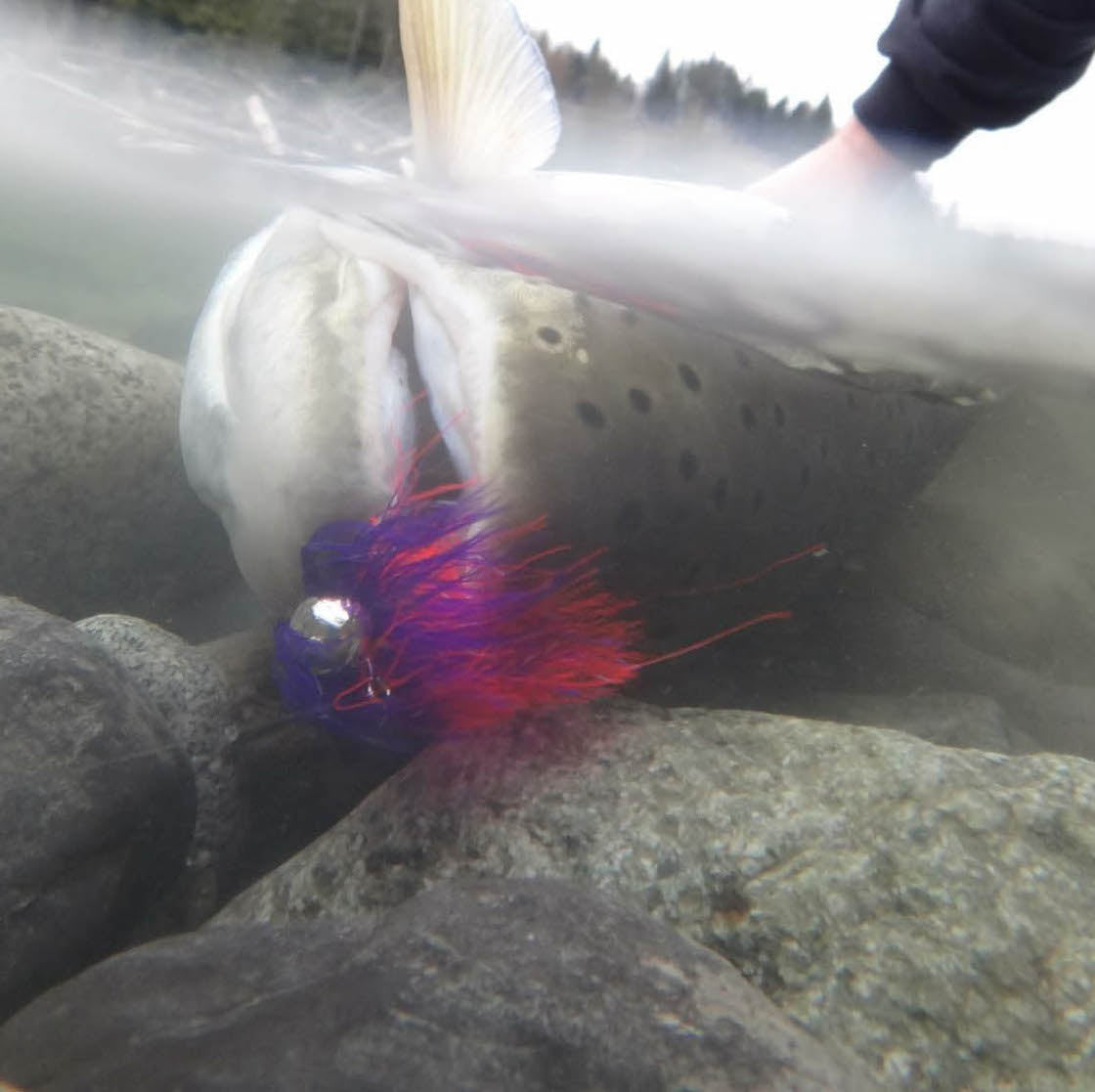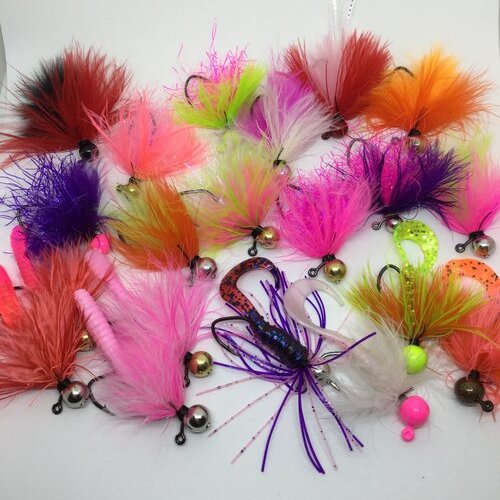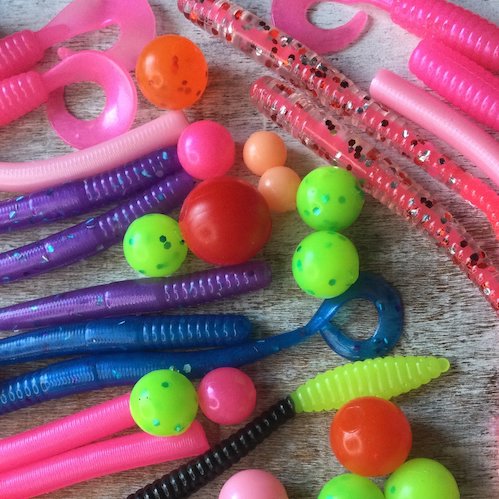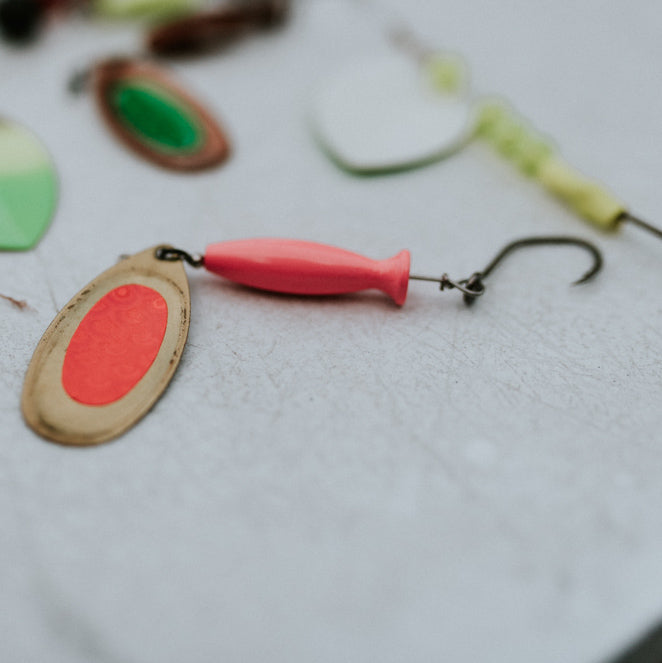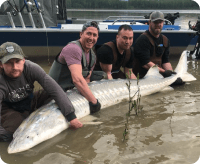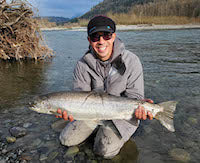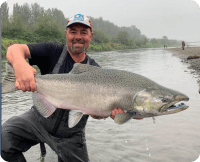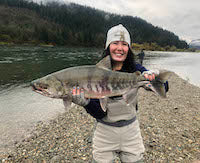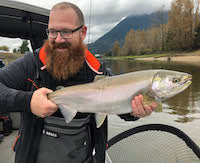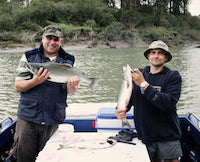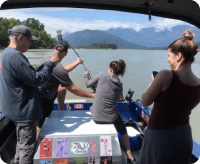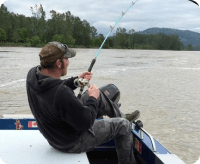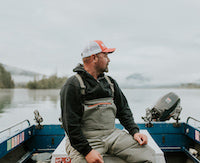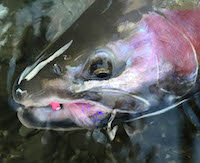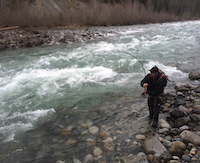Steelhead Broodstock- Fishing For The Future
Chilliwack River
A 4x4 speeds up a gravel road on a cold, crisp, February morning. Inside are two hardcore steelhead bums and a DFO employee from the local hatchery.
In the back of the truck are two very specialized rafts sporting custom built tanks for carrying live fish. In these times of shrinking budgets and questions about hatchery steelhead, volunteer anglers go to great lengths to provide the wild steelhead broodstock that seed the hatchery fish. Aside from building special tanks for carrying wild steelhead out of their own pocket, these anglers challenge dangerous waters to complete the goals set out by the Ministry of the Environment.
For this particular river, fifteen pairs of wild Steelhead are needed. If this number is reached, sufficient smolts will be produced to make for some great fishing for the sports anglers of the Fraser Valley. Over the last several decades this goal has seldom been met, the captures are difficult and volunteers move on with other interests and busy lives.
Steelhead broodstock Fishing
As the truck approaches its destination, boats are unloaded, gear is checked over and the butterflies begin for the two eager anglers. The river is wild, seldom changing, yet always providing unsuspecting thrills for man and boat. Rounding a bend in the river, both anglers smile in anticipation. The following run is known to them as ”Tim Hortons”, deriving it’s name from the fact that on may occasions three steelhead are hooked in its length, a triple if you will. Most of the runs have been given silly monikers by the two anglers, “arrowhead”, “my favorite run” the “runway”, just to name a few. As in years gone by, these seldom fished spots are named by the few who go there and all have different names for them.
Steelhead Jig fishing
After covering the run with their custom made jigs, not a single fish is found and questions arise to where the fish are today. The steelhead of this system are constantly on the move, traveling both up and down as water levels rise and drop. One day a run may produce four fish, the next nothing. Years of fishing the river is the only way to unlock the mystery of where fish like to hold in the different water levels. Twelve runs into the drift and not a single Steelhead has been encountered, some days the fish seem to be nowhere.
As the anglers float through a majestic corner pool, with rock walls rising two hundred feet above, they get their first glimpse of the “runway”, a run that has produced many fish for the hatchery program. The anglers have a system, alternating who gets first water in each run. As they approach the “sweet spot” of the upper “runway”, one angler spots a Steelhead sitting beside a large white rock, exactly where they so often do.
A soft cast with his thirteen foot noodle rod has the purple and pink jig dancing towards the fish, suspended beneath a balsa float.
As the jig is slowly heading down towards the steelhead, the fish is becoming agitated. The lure is dancing its magic and the fish seems to be preparing for an assault. As so often happens the steelhead watches intently as the offering passes by and only after it has gone past does the fish suddenly explode on the jig, taking it on the run.
Steelhead Fishing
This fish is very fresh from the ocean and the fight that follows is spent as much above the water as below it.
Jumping Steelhead
One of the great joys of broodstock angling is the added importance of not losing a wild fish that is desperately needed for the program. As female wild steelhead can be especially hard to come by on this river, the adrenalin rush resulting from a hooked wild doe is strong. After a short, spirited battle, the anglers are able to capture and gently place the beautiful fish in the custom made “brood bags”.
Happy Steelhead Fisherman
As the trip is at the halfway mark, the anglers must now carry the fish in the holding tank all the way to the takeout. In other instances fish are captured at upper runs and can be left in the bags at a drop off point, to be collected by these anglers or hatchery personnel, the following day.
From here on in, the fish must be removed at every run the anglers will fish and placed in the river in the brood bags to rejuvenate in the oxygen heavy flow. When the anglers have finished at the run they must replace the water and put the fish back in the tank. This task will be repeated up to a dozen times before they arrive at the bridge that is the takeout point for their journey.
The rest of the trip is very uneventful, with no steelhead encountered and only a few hookups with pretty little trout, hungry for a meal in this nutrient weak river. As the anglers arrive at the takeout, cold, wet and hungry they are greeted by the friendly hatchery manager, who is waiting for them by his truck. DFO personnel from the hatchery are not technically responsible for Steelhead enhancement, but their obvious love of this river and its steelhead is always apparent with the work they do. I salute those who feel that steelhead are worth protecting in these watersheds we have damaged with our human ways.
Steelhead broodstock Fishing
At this point the captured steelhead will be taken to the local hatchery and placed in a holding tank. The following day personnel from the Fresh Water Fisheries Society will arrive with a truck equipped with an aluminum tank and added oxygen and transport the fish back to their Abbottsford facility. As the Steelhead ripen they will be live spawned using a strict set of procedures that ensures maximum survival of eggs and fry.
After spawning, the wild adult Steelhead will be released into the Fraser River, in hopes they might return again to seed future generations of this spectacular fish.
The young Steelhead, upon hatching, will then be raised in the Abbotsford facility until they are smolts. They are heavily fed and grow quickly in the temperature controlled water. Next they are transported back to their river of origin and placed again in tanks at the DFO hatchery, soon to be released to the river.
While this procedure seems labor intensive, it is all part of producing genetically strong Steelhead that are as close to a wild Steelhead as can be achieved. While some arguments exist as to the genetic integrity of these hatchery raised Steelhead, science is on going and some evidence exists that these fish are genetically no different than a wild fish.
Steelhead broodstock Fishing
I would like to applaud all the volunteer anglers past and present, that spend time and money to provide opportunity for other anglers to enjoy the fantastic sport of angling for Steelhead. I also have great appreciation for the staff at the Fresh Water Fisheries Society and local DFO hatcheries that continue to work hard at providing sport anglers with a chance to fish for enhanced runs of Steelhead.
Story by Rod Toth of Bent Rods Guiding and Fishing Co.



